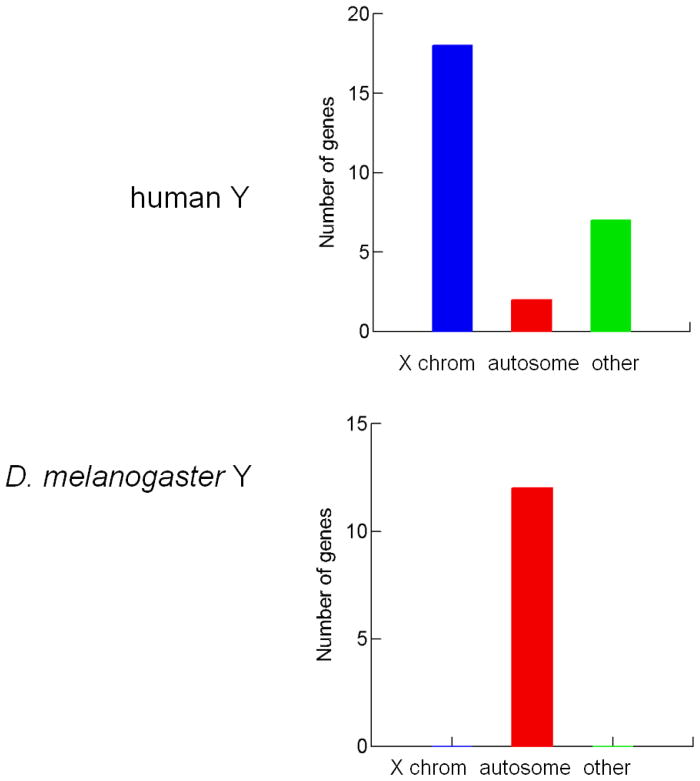FIGURE 1. Origins of Y chromosomes.
Panel A. Y-linked genes in humans and D. melanogaster. Genes ancestrally shared with the X are shown in blue bars, and those acquired from autosomes, in red bars. Genes with unknown origin or that are later additions to both the X and the Y are grouped in the “other” class (green bar). Genes on the human Y chromosome encode 27 different proteins. The majority of these genes are ancestrally shared with the X-chromosome, indicating that these chromosomes are homologous [6,7]. This class of genes is absent among the 12 known single-copy genes in the D. melanogaster Y chromosome, suggesting that X and Y are not homologous [9]. Several human Y-linked genes are multi-copy; we counted them only once.
Panel B. Main paths for the origin of Y chromosomes. Only male karyotypes are shown (autosomes in blue, mature sex-chromosomes in red, and extra chromosomes such as a B chromosome in yellow). The canonical path (top) starts when an autosome acquires a strong male determining gene M, becoming a nascent Y (its homologous became a nascent X). Degeneration of the nascent Y and the evolution of dosage compensation in the X originate mature sex chromosomes [1–5]. The neo-Y path (middle; shown here in a species with X0/XX sex-determination) starts with a X-autosome fusion, transforming the fused autosome into a neo-X. The free homolog became a neo-Y, which then degenerates [1]. The non-canonical path (bottom) starts when a parasitic B chromosome (which usually do not pair) acquires the capacity to pair with the X. Improvement of B-X pairing and the acquisition of male-fertility genes (F) originate a chromosome that will be termed as Y [10,34–36]. However, in contrast with the two other paths, these non-canonical Y chromosomes do not share any homologous region with the X, and is not formed by degeneration. Note that only canonical Y chromosomes are expected to have male-determining function (imparted by the M gene), and that the neo-Y and non-canonical paths can be distinguished because the former reduces the number of autosomes [1].


